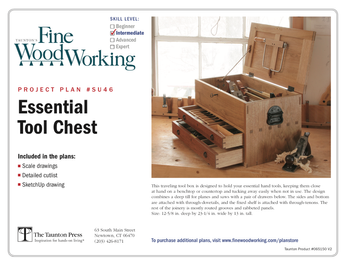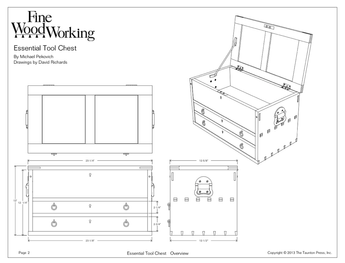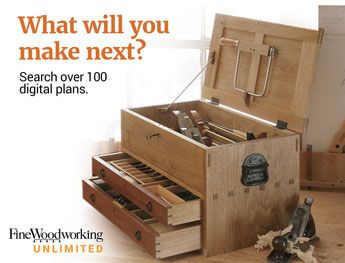Hi all,
I am a first time poster. We are building an addition and one of the perks is a roughly 24’x24′ new basement for a woodshop. I’ve done the following layout and am looking for comments/suggestions on its design.
A few items:
I plan on sliding the miter saw further from the door to accommodate longer pieces.
The bottom section of the wood rack needs to be oriented in the other direction to get sheets in and out.
I do not have a jointer yet and will probably be adding that down the road.
For electical I am planning two 20 amp circuits. One circuit will be for machinery, the other for dust collection.
Thanks in advance for your input.
*** UPDATE ***
Thank you so much for your thoughtful comments.
Here are my key takeaways:
I will definitely upgrade the electrical
I would sell my soul to remove the columns but I sold it a long time ago. The columns are already in and I will have to live with them.
I plan on putting virtually everything on casters knowing that my experience using the shop will likely result in changes down the road. With that in mind, I am also holding off on a fixed dust collection system. I will roll the DC around with me as I work (very inconvenient) but I have 3D printed connectors that easily snap together (very convenient) and will put them in an easily accessible location by each machine.
Do something about sound!! Interestingly enough, I just raised this issue with my contractor this week. We have a beautiful sunroom being built above the shop which I fully expect will be occupied while I work downstairs. After doing a bit of research it appears that the best treatment for a ceiling is 1. Insulate between floor joists with acoustic insulation 2. Attach resilient channel perpendicular to the floor joists and then attach one or two layers of plasterboard to the resilient channel. In the future, anything that attaches to the ceiling should be attached to the resilient channel and not floor joists. Walls should also get sound insulation and plasterboard and, finally, get vibration pads for machinery.
As for access, one of the doors leads into our garage which is at the same grade. I don’t recall whether this is a 36 or 44 inch door certainly 44 will be better.
Again, thank you all for helping me. It’s greatly appreciated.
















Replies
Sell your soul if you have to, but get rid of the columns! You'll need a lot more electric, make sure the lights are not on the same line as machines. Plan ahead for 220, you'll get there eventually. Do what you can to soundproof for whater you are building above or you'll find shop time affected by other humans' complaints.
1. equipment placement isn't optimized for dust collection. the duct runs are long and have multiple trunks.
2. if you are going to get a jointer in the future, then plan the layout now -- orientation and power.
3. work bench in the middle is nice; some like a wall close by so that their hand tools are not under the bench.
4. clamp rack location isn't shown
5. as you probably know -- your layout may change depending on how your work evolves. what seems like a good idea on a computer might not work once you are actually in the space. stay flexible.
6. one way to be flexible with electrical is to use wago-type wire connectors. these NEC approved lever-lock connectors facilitate adding wiring without having to undo and redo wire nuts.
Congrats on your new addition and shop. In print and on the web I've seen efficient layout designs dealing with support columns. Basically, your 4 most used tools and perhaps bench go in a circle around the column, leaving room for the infeed/outfeed for each tool. It allows for shorter electrical and DC duct runs. But, don't skimp on the electrical and I agree with adding or at least planning for a 220 circuit. Enjoy
I don't have a middle column but the branch of the DC and some electrical conduits drop near a center island from the rafters. 99.9% of the time it's a non issue. The center island has the TS with a RT in a wing, jointer and planer all around an outfeed table that hides DC duct to each machine. Each machine has 8'-10' of infeed/outfeed clearance. Miter saw, mortiser, drill press etc sit on a long bench along 1 wall.
Looks like a really good layout. A few thoughts to consider:
You are a bit short on power. Putting in the wiring now is very cheap compared with adding it later. Assuming a US base, 220V wiring should be added. You absolutely could get away with what you have suggested, but the extra cables and breakers are peanuts to run today and very expensive to run after everything is sealed up. What if you had a friend working with you? it is rare to run two machines at once, but it does sometimes happen.
It is very wise to have the Dust Collector on a separate circuit - I just don't think you have allowed enough for a good one. Mine draws the best part of 16A continuously at 240V and will blow the 20A breaker if you try to start the main whilst the filter cleaner is running. If you want to run central D/C and use ducting rather than move it around, you are very much in need of an upgrade - that sort will collect chips, but is very under powered for most users. I had one and it sort of did the job but an upgrade was well worth it - make sure you could run a better DC in the future if you needed to.
Do you REALLY need the mitre saw? - if you could not have one, would that change anything? Try and think if you could do without. They are not really essential - just a nice convenience but VERY space expensive. You can break down large stock with a circular saw or jigsaw. If it were a straight choice, a jointer would be far more useful.
Consider ceiling height. Ideally you want a full 2m/ about 6'6" between the floor and anything stuck to the ceiling so think 2.4m/8' stud height if you can.
Agree completely with the suggestions to remove the pillars if you can. My shop is in a pole barn with a centre pillar and it really limits layout options.
Do not neglect lighting - you almost can't have too much - multiple LED bars are excellent - you DO want to buy the more expensive ones which are dust proof though - mine have been up about five years now and have never needed cleaning.
Think about how you will get heavy machines and projects in and out. A wider doorway and heavy duty stairs? Could you run to a lift to the outside?
Consider sound - it is very hard to stop shop noises but insulation in the ceiling and 2 layers of plasterboard will make a massive difference. Make sure that the door to the shop is heavy too.
Consider an air cleaner and/or good ventilation options.
Depending on climate you may want to think about installing heating and/or cooling options. Again, running the power for them now is much cheaper than doing it later, even if the budget will not allow the unit to be installed right away. In a basement, I would be concerned about humidity, and of course depending on location, radon. As per previous, mitigation now is cheaper than correction later.
Don't neglect the floor! Smooth concrete is way easier to sweep than rough. It is worth having it trowelled, even if you don't have it polished.
Have fun and thanks for sharing the excitement.
Sound mitigation is a critical requirement, if others may be using the living space above while you are making saw dust below. A resource is ASC, Acoustic Science Corporation. They specialize in room treatment for higher end music listening rooms, but also offer sound isolation techniques and materials. Look into their elastomeric rubber strips for the resilient channels, and use of stripes of that same material between double drywall sheets on the ceiling. I contracted with them for my home theater ceiling design, and it is quite effective at preventing most of the theater sounds from reaching the above living area in our home.
I converted my garage to a shop a few years ago and it had one 15A and one 20A 110V circuit. It didn't take long before I decided I had to have at least one more 20A circuit because constantly trying to not trip a circuit breaker was a pain. You might want one or more additional 20A circuit(s) installed before you set up your shop. I also had a 220V circuit which allowed me to get a 3HP table saw and I'm glad I did. I won't ever need anything bigger.
Have you considered climate control for your shop? You don't have to leave it on all the time, but when you're using your shop, freezing or constant sweating takes a lot of the fun out of it. You probably shouldn't use the house HVAC. The return air would carry the finest and most dangerous tiny particles back into your house. Then the HVAC would blow them through the whole house. I saw you have dust control planned but from what I have read, and from my own experience I don't think anyone can capture all the dust right at the tool. That's why I think fine particle air filters are so popular. I live in the sunny (HOT!) south and use a large window AC mounted in the wall for cooling. Since I don't need as much heating, I currently use 3 small electric heaters. Even these small units pull a lot of current, so each one needs its own 110V circuit. So, I STILL have to shut them on and off, when I fire up a shop tool, to keep from tripping a breaker. Dust control and the hazard from dust are much bigger issues then I ever imagined.
Thank you so much for your thoughtful comments.
Here are my key takeaways:
I will definitely upgrade the electrical
I would sell my soul to remove the columns but I sold it a long time ago. The columns are already in and I will have to live with them.
I plan on putting virtually everything on casters knowing that my experience using the shop will likely result in changes down the road. With that in mind, I am also holding off on a fixed dust collection system. I will roll the DC around with me as I work (very inconvenient) but I have 3D printed connectors that easily snap together (very convenient) and will put them in an easily accessible location by each machine.
Do something about sound!! Interestingly enough, I just raised this issue with my contractor this week. We have a beautiful sunroom being built above the shop which I fully expect will be occupied while I work downstairs. After doing a bit of research it appears that the best treatment for a ceiling is 1. Insulate between floor joists with acoustic insulation 2. Attach resilient channel perpendicular to the floor joists and then attach one or two layers of plasterboard to the resilient channel. In the future, anything that attaches to the ceiling should be attached to the resilient channel and not floor joists. Walls should also get sound insulation and plasterboard and, finally, get vibration pads for machinery.
As for access, one of the doors leads into our garage which is at the same grade. I don't recall whether this is a 36 or 44 inch door certainly 44 will be better.
Again, thank you all for helping me. It's greatly appreciated.
If the shop will share space with any HVAC equipment - blowers, air handlers, whatever, there is no dust collection on Earth that will keep wood dust out of the rest of the house. Maybe some six-figure+ NASA set up would work, but nothing you can buy retail from the usual suppliers.
Hopefully, this isn't the case but if it is - sorry to rain on your parade.
By the time you drop the coin you need for dust collection, sound mitigation, electrical upgrades, installing beams to eliminate columns - you could have built a standalone shop in the backyard that won't bother a soul.
There are also problems with your proposed layout (machines against walls) -- I see long workpieces being fouled by other machines. A pod-like layout of the machinery in the middle of the floor can eliminate a lot of this. I know you are going to have everything on wheels, but you're going to get tired of rolling stuff around I can assure you.
Walkout basements, assuming they are not too humid, are great places to store lumber. Remember, you need wood to do woodworking, and it takes up more room than any of your equipment. A lot of guys forget about the wood.
Signed,
Not a fan of basement shops (been there, done that, hated it)
Pull a MacDonald and take the kids chalk out to a nearby tennis court.
Draw different layouts out and see how it feels simulating work.
I only had one 120V circuit in my basement workshop when I bought my house. I soon found out I needed a 220V for the jointer and for the table saw as I upgraded those. The one 120V also became 3 in total. Color code the outlets to each circuit and mix them in the various outlet boxes. It is fantastic to have two circuits in each box and to know exactly what is plugged into what circuit. My outlets are white, orange and grey.
Also, IMO the jointer is a much better use of space over the mitre saw.
While much of my shop is on casters, you don’t want to move things if possible. It’s a big time suck.
When arranging equipment, I lined up 8’ of infeed and outfeed space for each machine. The only way I could do it was by overlapping some of them and lining one up with an aisle.
Much of this is already above, so I’m agreeing with it and adding a little.
Great idea color coding outlets and putting them in the same box. I never would have thought of that!!
If I were starting over, I’d want more 240 V (at least three independent lines but likely 4) and more light. It never seems bright enough and I do by any measure have a ton of light in the shop. I did a good job on the 120 V lines.
Lots of good info here and I’d make your router table the same height as the bandsaw table. Also, your sander and grinder can be combined into a flip top cabinet to free up some space.